|
NC667K was manufactured October 28, 1929. It is signed into the Davis-Monthan Airfield Register three times. Each time it was piloted by Dudley M. Steele. The airplane was owned by the Richfield Oil Company and Steele was the company's chief pilot. Image, below, shows Steele on the left in a short jacket with the Richfield Oil Company logo patch on the left pocket. Both pilots hold helmet and goggles. This might have been a pre- or post-flight photo op.
NC667K, Dudley Steele and Register Pilot Charles Lindbergh (R), ca. 1929-31
(Source: Wilson)
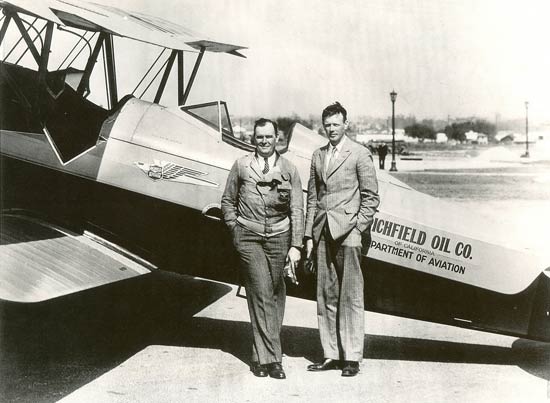 |
Regarding the photograph above, the following two news articles FAA records show an engine change to the Pratt & Whitney in August 1931 and the airplane became a Model 4E.
Dating the airplane comes from the art deco eagle to the right of Dudley Steele. It is only pictured on the aircraft with a full NACA cowl and the NACA cowl had the Wright J-6 inside and the exhaust ring on the front of the engine. All pictures with other "eagles" (below, on the vertical stabilizer) have a speed ring and the exhaust in the rear for the Pratt & Whitney engine.
Owner Wilson is restoring the airplane to look like the image below. She says about this image, "The Jimmie Allen picture has to be between 1932 and 1934. ... I have to go by the livery changes to get a timeline."
NC667K, Probably After December, 1933, With Pratt & Whitney Engine
(Source: Wilson)
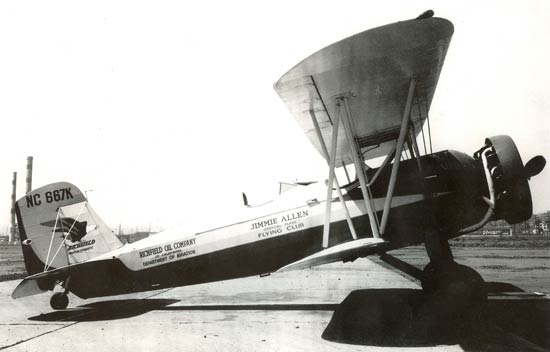 |
Further to dating the image, on the original, visible just under the engine exhaust in the background is a billboard for "Rainier Beer". Although hard to tell at this distance, the billboard paint looks fairly fresh. If that is so, then the picture was probably snapped after December, 1933 when Prohibition was repealed in the U.S. The brewing of Rainier Beer began in 1935 after Prohibition was lifted, so the billboard may have been part of a pre-marketing or grand reopening advertising thrust. Since Rainier was a local Seattle brand, it's not too far a stretch to guess the image was taken somewhere in Washington State where the beer was referred to as "Vitamin R." After a series of transfers, mergers and buyouts, the brand ceased manufacture in 1999. There is probably a great vitamin R deficiency in the northwest these days. Another photograph of 667K from NASM is below. It shows the airplane on the ramp being refueled with Dudley Steele standing at left, probably too close with a cigar in his hand. It wears the same livery as in the photograph above.
NC667K, Probably After December, 1933, With Pratt & Whitney Engine (Source: NASM)
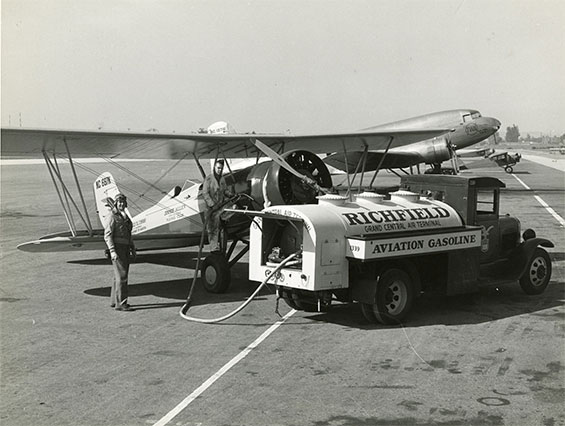 |
Dudley Steele as their chief pilot signed on all aircraft paperwork for the Richfield Oil Co. The aircraft was sold in October, 1937 to the State Division of Forestry. Afterward it became a crop-duster and met its demise at Carberry's. Carberry's (started by Mal Carberry) is now called Air-way Farms - it was a large crop-dusting company outside of Los Angeles.
NC667K arrived at Tucson the first time Wednesday, March 12, 1930 at 4:00 PM. Based at Los Angeles, CA, Steele was solo northwestbound from Douglas, AZ to Phoenix. On Thursday, June 25, 1931 at 9:30 AM he landed carrying a single passenger, Warren Knox. They were enroute from Phoenix to Douglas.
The final landing was on Saturday February 3, 1934 at 6:00 PM. He was solo eastbound from Los Angeles to New Orleans, LA. No purpose was listed in the Register for any of Steele's trips.
Below are three images shared by owner Wilson of the state of restoration at the time of upload of this page. The first photograph shows the robust fuselage of NC667K suspended overhead at the shop.
NC667K Fuselage, March 2008
(Source: Wilson)
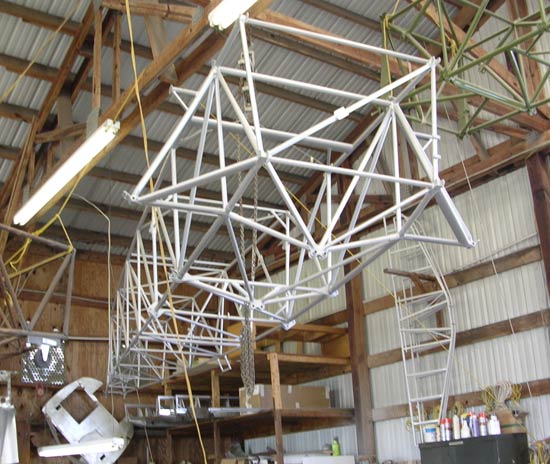 |
Below, flight control surfaces suspended similarly.
NC667K Flight Control Surfaces, March 2008
(Source: Wilson)
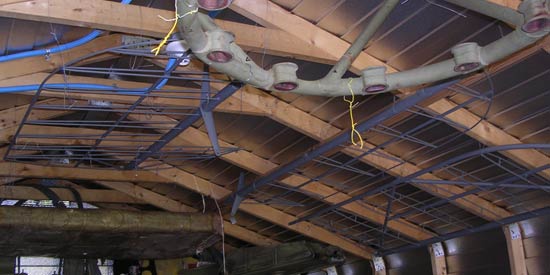 |
Finally, wing rib jigs with ribs under construction awaiting gussets.
NC667K Wing Ribs in Jigs, March 2008
(Source: Wilson)
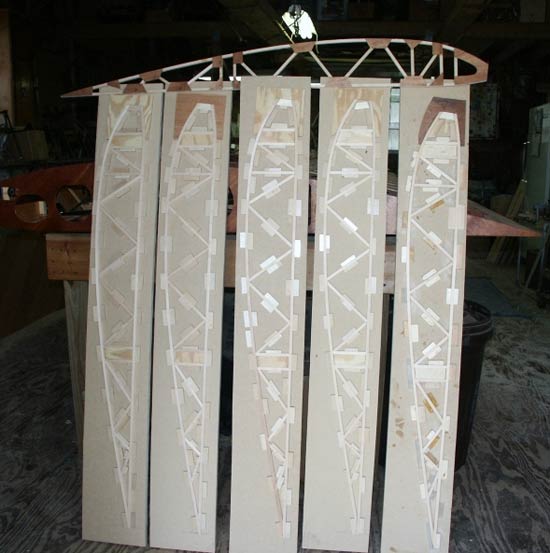 |
Update of 12/08/10 Owner Wilson shares the following three progress photos. The first is of the fuselage frame. Compare it with the photo above. Note that the turtle deck stringers have been installed, as well as some wooden formers near the front.
NC667K Fuselage Frame, December, 2010 (Source: Wilson)
 |
Below, a long view of the top wing from the port side. The jigged ribs from above have been placed and glued spanwise on spruce spars to form the wing.
NC667K, Long View of Top Wing, December, 2010 (Source: Wilson)
 |
Below, a partial view of the wing from the leading edge. The structure is made up of solid Sitka spruce, mahogany plywood and steel. Most Golden Age aircraft wings look pretty much the same on the inside, with compromises between strength and rigidity and weight. Note that clear varnish is used as a protective finish. Wooden internal structures are rarely if ever painted with pigments. To do so would compromise the ability of the structure to be inspected for stress or decay. The front and rear spars are visible, as is the method of attaching the ribs spanwise, topped with cap strips.
The fabric covering of the wing is sewn to each rib with a standard number of stitches. the stitching is performed with a special, long needle that allows the fastening cord to extend through and capture the top and bottom fabric across the thickness of each rib. Each stitch is individually knotted with a seine knot, the same as the knot used for handmade fish nets. This is a painstaking, time-consuming manual process.
NC667K, Close-Up of Wing Geometry, December, 2010 (Source: Wilson)
 |
Owner Wilson says about her airplane, "I will be flying my Speedmail in 2011!" How exciting to follow a Register airplane through the long, 82-year time from 1929, when we see it with Steele and Lindbergh, above, to 2011when it will fly over Florida. Would that we could crack a "Vitamin R" in celebration!
Update of 04/02/12 The first flight has been delayed to the summer of 2012. Owner Wilson shares an excellent update/backgrounder on NC667K at the link (PDF, 1.5MB).
Update of 04/26/13 First flight has happened (on August 29, 2012), and a video of first takeoff is at the link. I visited with NC667K and owner Sarah Wilson on April 10, 2013 at Lakeland, FL. In the photo below, owner Wilson and Your Webmaster occupy the positions of Dudley Steele and Charles Lindbergh, respectively, as in the top photograph on this page.
Stearman NC667K, Sarah Wilson, Your Webmaster (Source: Webmaster)
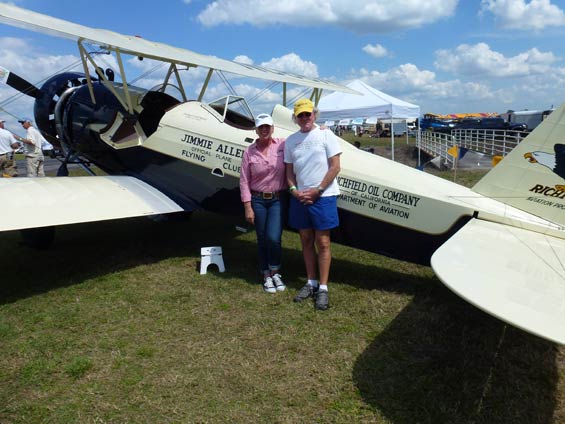 |
Below are some additional photographs taken with owner Sarah Wilson's permission to share with you.
Stearman NC667K, Front View (Source: Webmaster)
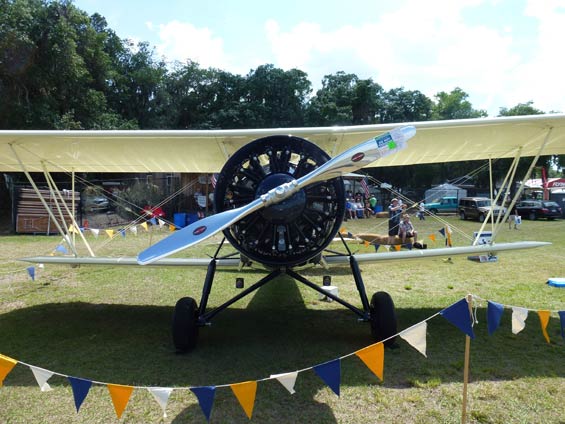 |
Stearman NC667K, Rear Port Quarter View (Source: Webmaster)
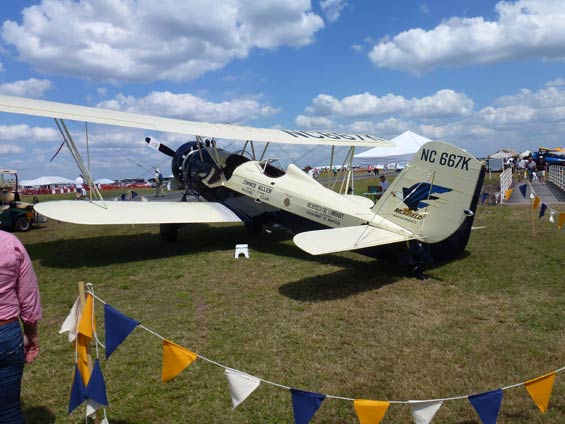 |
Stearman NC667K, Empennage View (Source: Webmaster)
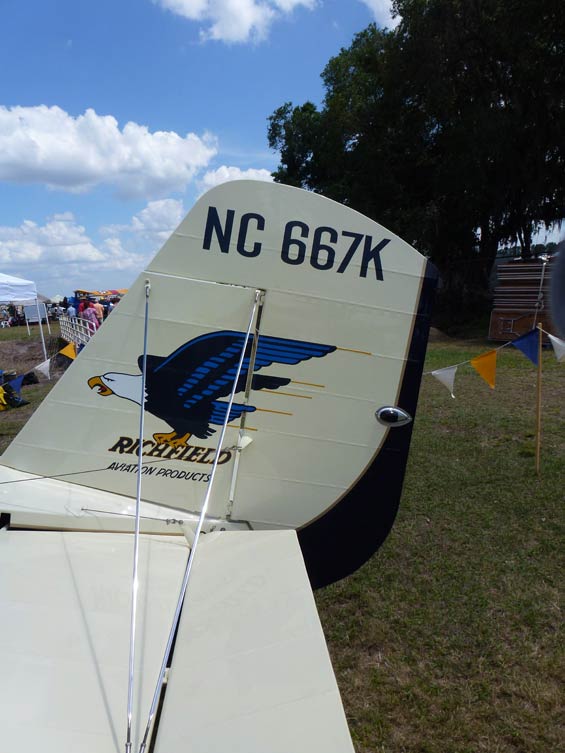 |
Below, the original data plate for the airplane.
Stearman NC667K, Original Data Plate (Source: Webmaster)
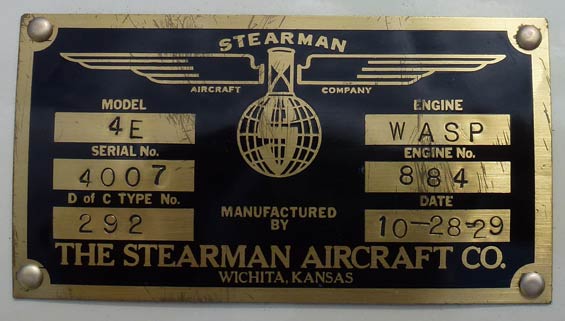 |
Dudley Steele flew this airplane through Tucson for the first time on March 12, 1930. It was five months old and appeared very much as in these photographs.
Stearman NC667K, Pilot's Name Under Coaming (Source: Webmaster)
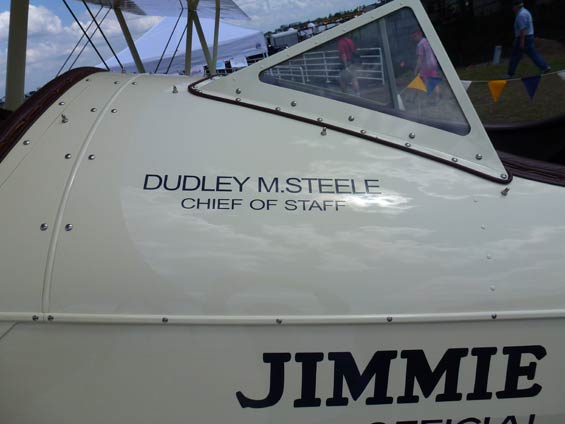 |
Stearman NC667K, Pilot's Rear Cockpit (Source: Webmaster)
 |
Stearman NC667K, Passenger's Front Cockpit (Source: Webmaster)
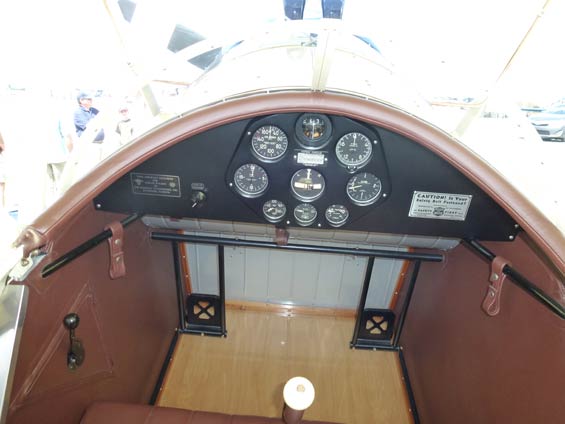 |
Below, the control stick knob with American Legion emblem. An excellent tribute to the detail that went into the restoration.
Stearman NC667K, Control Stick Knob (Source: Webmaster)
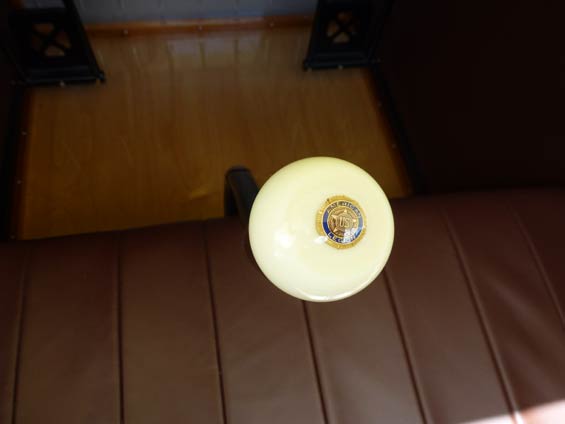 |
A premium given away when owner Wilson exhibits her airplane is the following coloring book image for children to work with. You may download an 8.5" x 11.0" page for your prospective pilots at the link (PDF 358Kb).
NC667K Coloring Book Image (Source: Wilson)
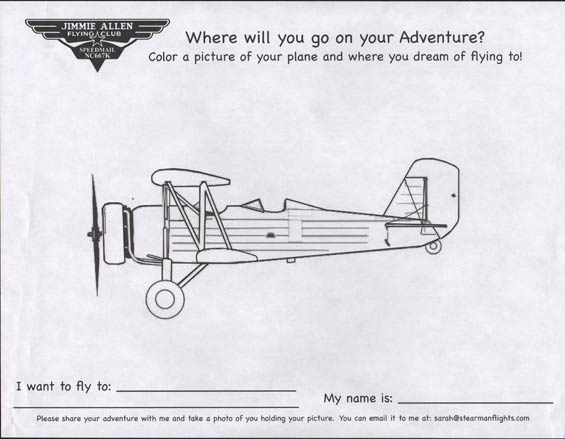 |
Additional photographs and information are at the link.
---o0o---
THIS PAGE UPLOADED: 03/05/08 REVISED: 12/08/10, 04/02/12, 04/26/13, 05/20/13, 01/13/18
|
